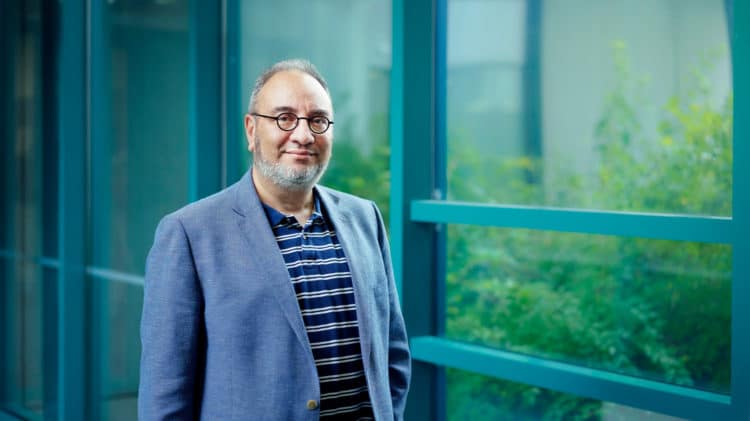SUPERIOT – Creating a genuinely sustainable internet of things
Press release from 6G Flagship

SUPERIOT is a European Union-funded research project focusing on developing sustainable and reconfigurable IoT technologies. It brings together 11 partner organisations across Europe, including universities, research institutes, and private companies. The project is coordinated by 6G Flagship at the University of Oulu. It has a budget of €5M and is scheduled to run for three years, from Q1 2023 to Q1 2026.
SUPERIOT will develop a unique IoT approach exploiting not only radio, as in conventional IoT systems, but also light. In this dual-mode operation, radio and light will provide wireless connectivity, energise the IoT nodes and support robust and precise positioning. This will result in a highly flexible IoT system that can use resources efficiently. The project aims to develop a genuinely sustainable IoT system by approaching sustainability holistically. In other words, SUPERIOT will develop an IoT system that is sustainable by design and implementation. The project plans to demonstrate that an IoT communication system (infrastructure and nodes) can be environmentally friendly.
One important research area is node implementation. Printed electronics technology will be used to implement IoT nodes sustainably. As the nodes will harvest their energy from radio waves and light, no battery nor maintenance will be required, decreasing the environmental footprint of the solution. Printed electronics technology allows the manufacturing of components to be sustainable and flexible. In the future, printed components could be reused, recycled, or ecologically disposed of. In addition to working on node implementation, the SUPERIOT project will explore other ways to make IoT technologies more sustainable. This includes investigating new reconfigurable optical-radio operation methods that could reduce energy consumption and developing new communication protocols specifically designed for low-power IoT devices.
Radiowaves and light put into use side by side
Professor Marcos Katz, the coordinator of the SUPERIOT project, sits down with us to discuss the project. “We aim to develop a new generation of sustainable and reconfigurable IoT (RIoT) technologies, which will significantly impact how we live in future. Innovative hardware and software components will be combined with radio and optical networks to create a highly flexible IoT system that works in different environments and under changing conditions. The reconfiguration capabilities will allow to flexibly combine radio and light to fulfil the requirements of different applications, even under dynamic changes of the operating scenarios.
These types of technologies will help us move toward a more sustainable society. They will help reduce our environmental footprint and make our devices and infrastructure more energy-efficient,” Katz explains and continues, “One aspect of the SUPERIOT project we should not overlook is that it will help create new business opportunities and, therefore, also new jobs.”
RIoT – reconfigurable optical-radio concept
We ask Katz about RIoT in more detail. “When you say RIoT as a word, it sounds forceful,” Katz smiles. “We spell it out: ‘R-I-O-T’ to avoid confusing people thinking about any public disorder. RIoT is a reconfigurable optical-radio concept where the system automatically decides the best way to exploit radio and optical resources according to the prevailing situation. The decision depends on the availability of the networks, security issues, the application’s requirements, the user or operator decisions, etc.”
Precise goals keep the team on track
The SUPERIOT project will showcase the technology’s potential through four proof-of-concept demonstrators. “We intend to create and demonstrate a RIoT optical-radio node, a RIoT optical-radio network, a printed limited-capability IoT node, and a large-area IoT node. These demonstrators will be built around applications. In the testbeds, the concepts of dual-mode optical-radio energy harvesting and dual-mode optical-radio positioning will also be demonstrated,” Katz outlines the project’s ambitious goals.
By the end of the project, the team aims to have developed new technologies that can be used to create genuinely sustainable IoT solutions. Compared to current offerings, the newly developed IoT concept will use more efficiently energy, spectrum, and infrastructure, and will be implemented with sustainable technologies.
A future-proof concept
Professor Katz thinks this project can be seen as an initial step towards developing much more impactful technology.
The 6G era will see the emergence of very low-cost, no-battery printed IoT nodes, sticker-like small surfaces than can be attached anywhere, converting virtually any possible object into a connected entity. In the long term, we will be able to integrate onto surfaces other communication technologies and other functionalities such as sensors, actuators, computational resources, and energy harvesting units, all implemented with printed electronics technology.
Katz refers to the Living Surfaces concept, where any surface, small or large, can be viewed as an opportunity to integrate functionalities sustainably, thereby creating active areas that interact with the environment and people. “In many cases, no additional physical devices are required. The walls, ceiling, floor, tables, or surfaces of smaller objects can be covered by an ‘active skin’, which contains key capabilities like displays, access points, microphones, screens, touch-sensitive areas, lighting panels, computing units, IoT nodes, environmental sensors, energy harvesting and storing blocks,” Katz lists. These functions could be designed to be massively repeated across the surfaces, ensuring that they are always present and close to the user. “This vision won’t come true in the 6G world, however, but rather in the double-digit G world,” Katz predicts.
Originally published on 10 January.
Announcements are published as a service to readers. The sender is responsible for all content.
Announcements for publication can be submitted to pr***********@ar**************.com.